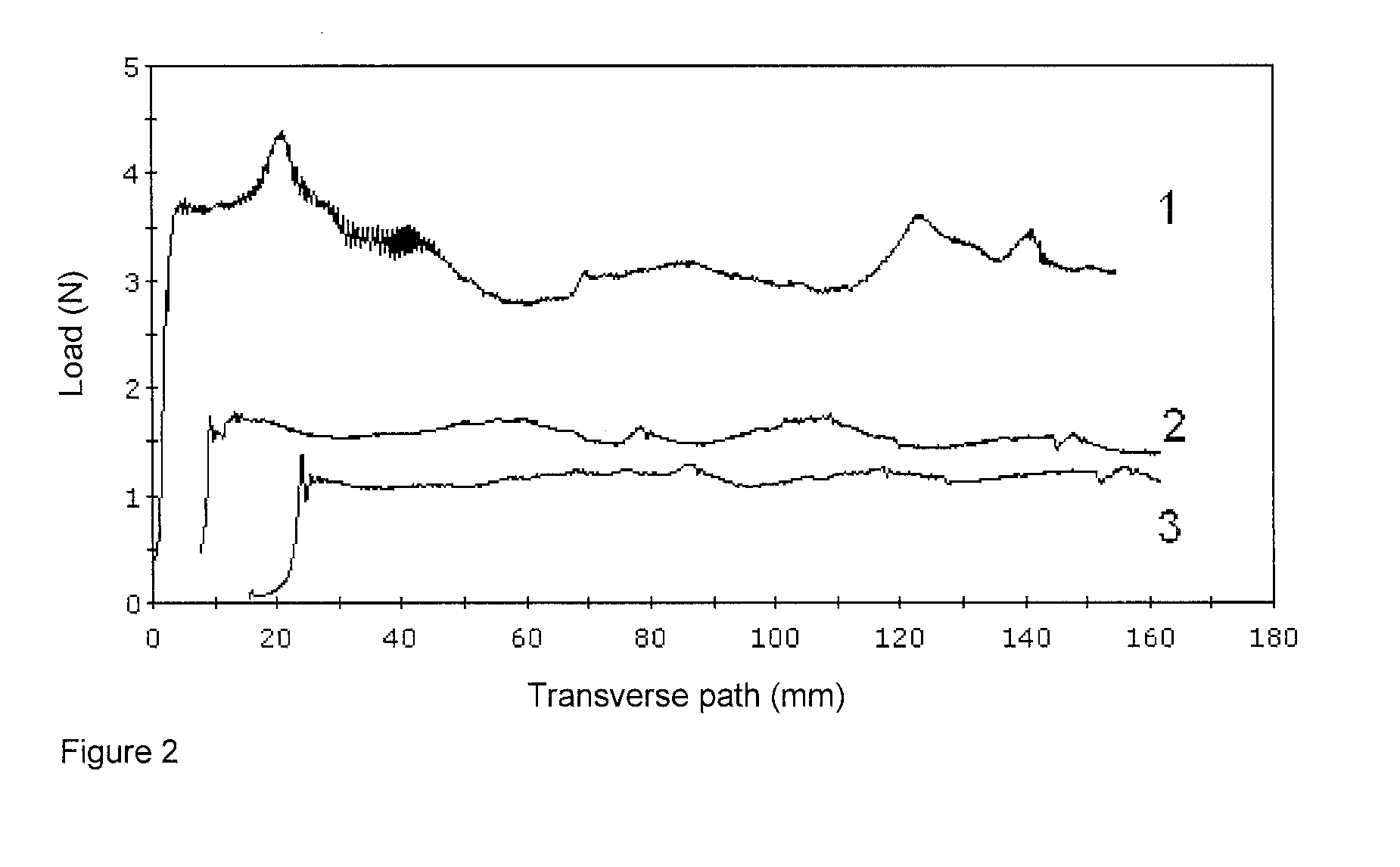Microemulsion of polysiloxanes containing quaternary ammonium groups, production and use thereof
a technology of quaternary ammonium and polysiloxanes, applied in the field of microemulsions, can solve the problems of high viscosity, inability to be handled or incorporated into cosmetic formulations, and the nonionic surfactants referred to as being suitable are without exception alkoxylated compounds
- Summary
- Abstract
- Description
- Claims
- Application Information
AI Technical Summary
Benefits of technology
Problems solved by technology
Method used
Image
Examples
examples
Siloxane 1: Polysiloxane T-Quat with N=121
[0188]A quaternary polysiloxane was prepared according to Example 4 from EP 1887024, but with a total siloxane chain length of N=121. This gave a high-viscosity, slightly yellowish product with the following statistical structure.
Siloxane 2: Polysiloxane T-Quat with N=151
[0189]A quaternary polysiloxane was prepared according to Example 4 from EP 1887024, but with a total siloxane chain length of N=151 and with lactic acid instead of acetic acid. This gave a high-viscosity, slightly yellowish product with the following statistical structure.
Siloxane 3: Polysiloxane T-Quat with N=211
[0190]A quaternary polysiloxane was prepared according to Example 4 from EP 1887024, but with a total siloxane chain length of N=211. This gave a high-viscosity, slightly yellowish product having the following statistical structure.
Siloxane 4: Polysiloxane Multi-T-Quat with N=250
[0191]A quaternary polysiloxane with 5 T units was prepared according to Example 2 from...
formulation example t1
[0253]20 parts of siloxane 5 heated to 40° C. to 80° C. are placed in a beaker with propeller stirrer with stirring. Then, 10 parts by weight of dipropylene glycol, 10 parts by weight of a fatty alcohol ethoxylate with a degree of ethoxylation of 6 were added in order with stirring. Finally, the mixture is made up to 100 parts by weight with water and stirred until the mixture has cooled to room temperature, but at least for 15 min.
Preparation of a Siloxane Microemulsion (According to the Invention) of Formulation Example T2
[0254]Corresponds to formulation example microemulsion ME 33
[0255]Preparation of Fabric Softener Formulations:
formulation example t3
Ca. 5% by Weight of Siloxane-Free Fabric Softener Formulation (not According to the Invention—Reference)
[0256]33.3 g of a liquid REWOQUAT® WE 18 heated to 40 to 80° C. (trade name of Evonik Goldschmidt GmbH, triethanolamine-based esterquat with an active content of 90%) were added to 556 g of tap water heated to 45-65° C. with stirring, and the mixture was stirred for 20 min using a propeller stirrer at 45-65° C. and cooled to room temperature over the course of ca. one hour.
PUM
| Property | Measurement | Unit |
|---|---|---|
| Percent by mass | aaaaa | aaaaa |
| Percent by mass | aaaaa | aaaaa |
| Percent by mass | aaaaa | aaaaa |
Abstract
Description
Claims
Application Information
 Login to View More
Login to View More - R&D
- Intellectual Property
- Life Sciences
- Materials
- Tech Scout
- Unparalleled Data Quality
- Higher Quality Content
- 60% Fewer Hallucinations
Browse by: Latest US Patents, China's latest patents, Technical Efficacy Thesaurus, Application Domain, Technology Topic, Popular Technical Reports.
© 2025 PatSnap. All rights reserved.Legal|Privacy policy|Modern Slavery Act Transparency Statement|Sitemap|About US| Contact US: help@patsnap.com



